Among the most eagerly awaited of October birds are the wing-barred Phylloscopus or leaf warblers. Three species – Yellow-browed, Hume's Leaf and Pallas's Warblers – are among the most delightful birds on the British list: tiny, hyperactive and jewel-like. They are not the only options, however. The much rarer Eastern Crowned and Pale-legged Leaf Warblers, both recent additions to the British list, are also possible in October.
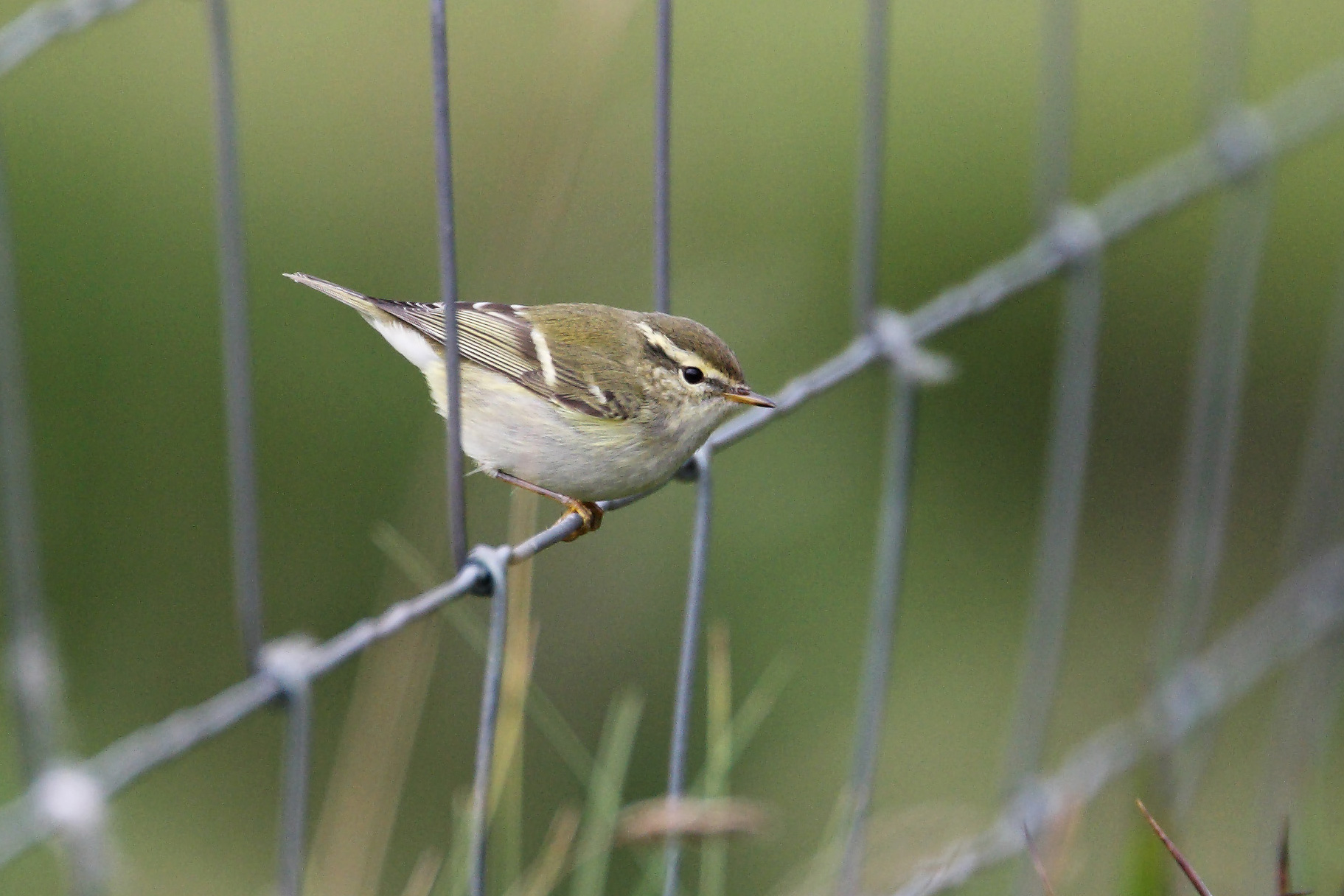
Yellow-browed Warbler (Geosetter, Shetland, 10 October 2010). Though arboreal specialists, migrant leaf warblers sometimes have to cope with the bleakest of coastal habitats. This wire fence is a typical setting on Shetland, where trees are few and far between (Jonathan Lethbridge / www.justbirdphotos.com).
Yellow-browed Warbler
This species has a large and northerly breeding range across Siberia, reaching as far west as the northern Urals. It winters throughout southern China and South-East Asia.
There were relatively few British records until the 1960s. Since then, however, there has been a massive increase in occurrences, with many hundreds reported in most years and multiple arrivals now routine on the Northern Isles, the east coast and Scilly, all locations where this can be the commonest warbler species at times.
It occurs earlier than Pallas's Warbler, normally from mid-September, but arrivals can continue into November, with a peak in late September and early October. In recent years, a few have also wintered, mainly in the South-West, and there have been a number of spring records.
Slightly larger than Pallas's Warbler, it is still a tiny bird, though a little less compact, large headed and short tailed, and it lacks the sustained hovering capability of Pallas's. It is also bright and has a slightly weaker face pattern, a more yellowish cream supercilium, a paler crown with no central stripe (although a weak pale centre may be present) and no pale rump. The creamy-yellow wing-bars and white tertial edges are, however, broad and prominent.
Unlike its congener, it is very vocal and often first located by its distinctive call: a quite loud, high-pitched, penetrating and rising tse-weee.
Hume's Leaf Warbler
A southern montane counterpart of Yellow-browed Warbler, Hume's breeds in Central Asia and winters in the Indian subcontinent. Previously regarded as a subspecies of Yellow-browed, its distinct morphology and vocalisations are now better understood.
This is by far the rarest of the regular tiny leaf warblers in Britain, with 139 records to the end of 2015, but as with the other species, there is an upward trend. This is a bird of late autumn, occurring in late October and November (at the same time as Pallas's Warbler). The east coast has amassed the lion's share of records. A few individuals have overwintered.
In size and structure, this species is essentially identical to Yellow-browed Warbler. However, its plumage is duller, more grey-green and less bright above, and 'dirtier' or more 'sullied looking' below. Its face pattern is blander and may be suffused with buff, while its wing-bars and tertial edges are less boldly defined and contrasting. Its median covert wing-bar may be almost absent. The bill and legs are predominantly dark.
It has two call types: a cheery, rising che-wee, slightly reminiscent of Greenish Warbler, and a down-slurred swee-oo with a harsh, almost House Sparrow-like, quality.
Pallas's Warbler
Pallas's Warbler breeds across southern Siberia, and winters in southern China and South-East Asia. It was a near-mythical rarity in Britain before the 1980s, but since then there has been a remarkable upsurge in records. It is now an expected feature of late autumn, with some years seeing more than 200 records. It is found from early October through to late November, the first arrivals often on the Northern Isles, with later birds mainly along the south coast and in the South-West. Mostly, however, this is a bird of the east coast.
Pallas's Warbler is a truly tiny species, compact, large headed and short tailed, barely bigger than a Goldcrest but incomparably brighter. A typical view is that of a tiny jewel of a bird, bright green above and whitish below, and adorned with broad, bright yellow supercilia bulging before the eye, a strong dark eyestripe, and dark crown sides with a sharply defined yellow central stripe. It boasts broad, double yellow wing-bars, white tertial edges and a neat 'postage stamp' of a yellow rump. Pallas's Warblers habitually hover, picking insects off the underside of leaves, and they can hang upside down like a tit, too. Its call is quiet and easily missed: a soft, slightly finch-like chewit.
Eastern Crowned Warbler
This slightly larger species has an extreme Far Eastern distribution, breeding in Transbaikalia, the Russian Far East, Korea and Japan. It
winters in southern Thailand and Malaysia.
The first British record was in 2009, since when a further three have occurred, all in October. There are no Irish records.
It is perhaps most similar to Arctic Warbler, but is brighter green above with narrow double wing-bars, plain tertials, a yellowish wash to
the undertail coverts, extensive orange in the lower mandible and, most importantly, a pale central crown stripe, most obvious from behind.
It rarely calls, particularly so during its few British stays, but can utter a strident chiu, a quieter phit phit or a nasal dweee.
Pale-legged Leaf Warbler
Pale-legged Leaf Warbler breeds even farther east than Eastern Crowned Warbler – in the Russian Far East and North Korea – and winters in
South-East Asia.
The only confirmed British record was a bird found dead on St Agnes, Scilly, in October 2016, but another example – either of this species or the near-identical Sakhalin Leaf Warbler (breeding in Sakhalin and Japan, and a recent split) – was on Portland, Dorset, in October 2012.
Pale-legged Leaf Warbler is a dark mossy green above, with a contrasting greyish forehead, crown and nape (with no central stripe). There are narrow double wing-bars and the tertials are plain. The legs are a very pale pink, but its most notable features might be its neurotic, rather Dusky Warbler-like behaviour and distinctive, high-pitched, insistent zink call.

Yellow-browed Warbler (Fair Isle, Shetland, 28 September 2007). This fresh autumn Yellow-browed Warbler is showing its features to perfection: a small, compact, slightly short-tailed structure, bright 'green above and white below' appearance, a long, creamy-white supercilium, strong white wing-bars on both the median and greater coverts and crisp white fringes to the tertials; this last common to all the small Phylloscopus warblers on the British list. Note also the typical bare parts coloration: extensive orange in the bill base and orangey hues in the legs and, especially, the feet (Rebecca Nason / www.rebeccanason.com).
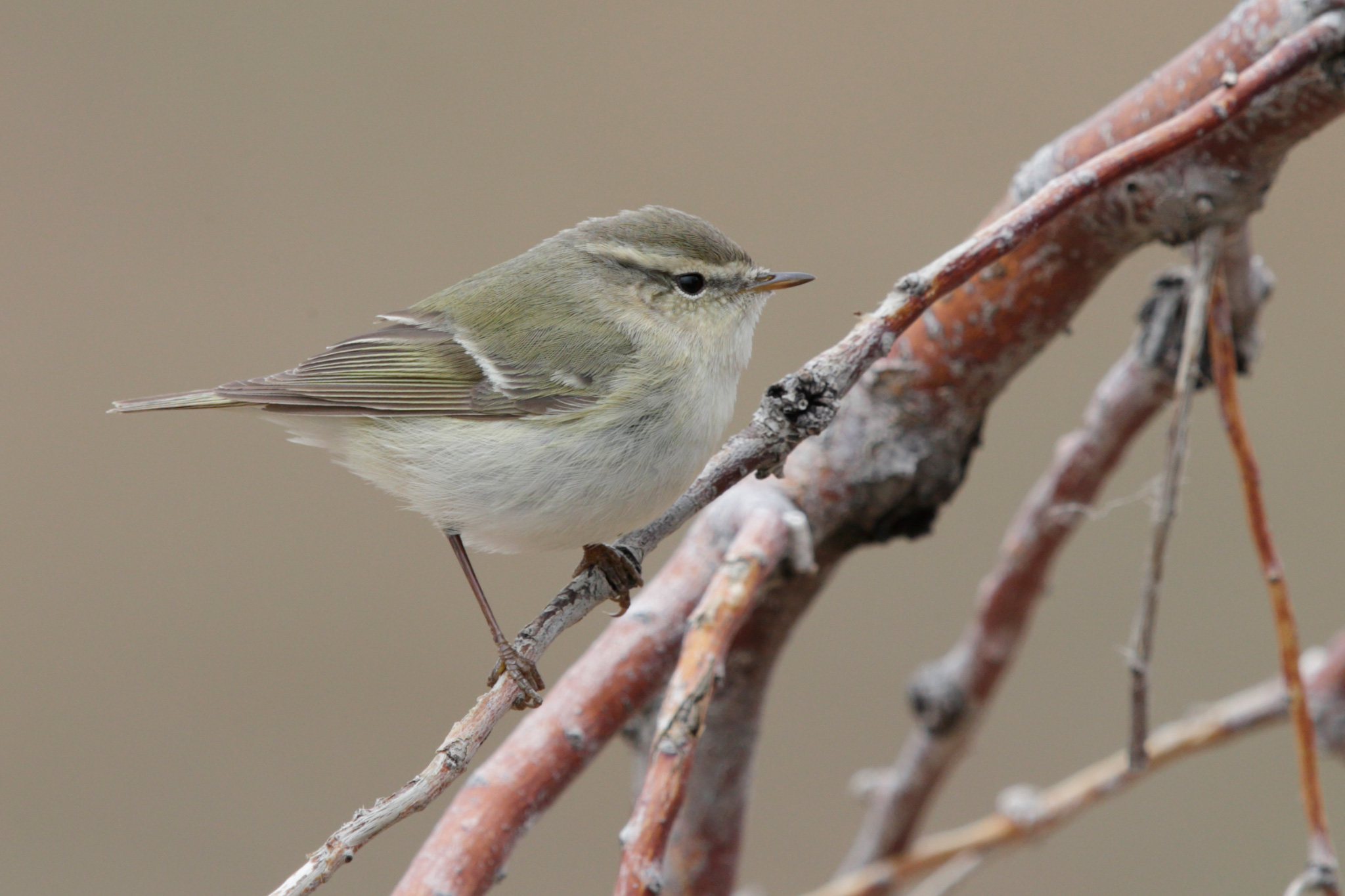
Hume's Leaf Warbler (Almaty, Kazakhstan, 19 May 2013). Though a somewhat worn individual (note the narrow wing-bars and tertial edges), this Hume's Leaf Warbler still shows a number of important differences from Yellow-browed Warbler. Note the rather drab greyish hues in the upperparts and the dull greyish-white underparts. The face pattern is subdued too, the bill is more extensively dark and the legs and feet are also dark (Mike Danzenbaker / www.agami.nl).
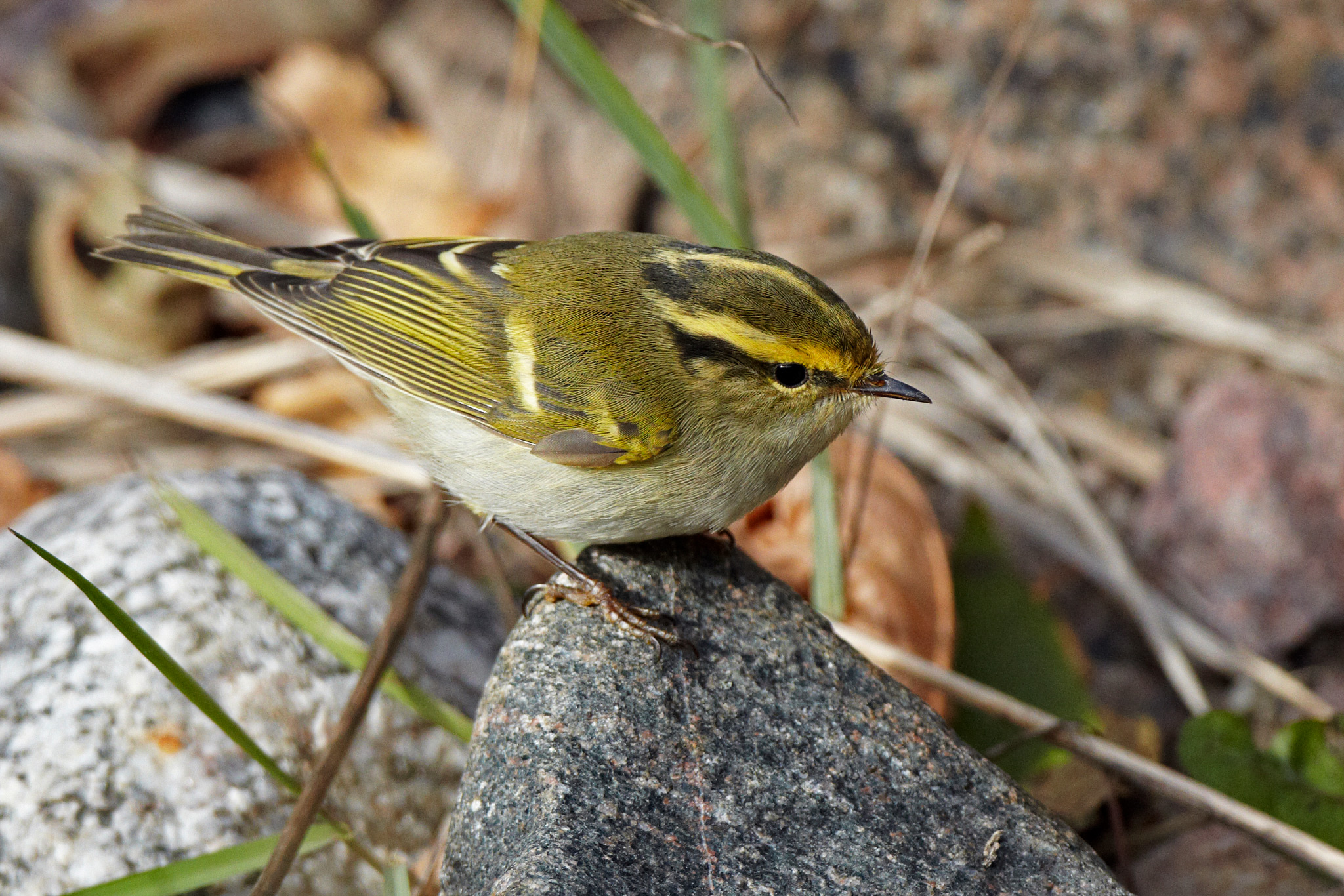
Pallas's Warbler (Finland, 13 October 2010). This bird is instantly recognisable as a Pallas's Warbler by its dark olive crown, prominent, well-defined yellow central crown stripe and strong face pattern with a solid dark loral line and eyestripe and a broad and bright yellow supercilium. There are also strong yellow hues in the wing-bars (Markus Varesvuo / www.birdphoto.fi).

Eastern Crowned Warbler (Bempton Cliffs RSPB, East Yorkshire, 6 October 2016). In life this bird should be obvious as a larger Phylloscopus warbler, but a quick look at the wholly plain tertials should confirm this diagnosis. The narrow double wing-bars on this bird might initially suggest an Arctic Warbler, but the most obvious feature is the greyish-olive crown with a central stripe. The only large Phylloscopus on the British list with this head pattern is Eastern Crowned Warbler (Tony Dixon).
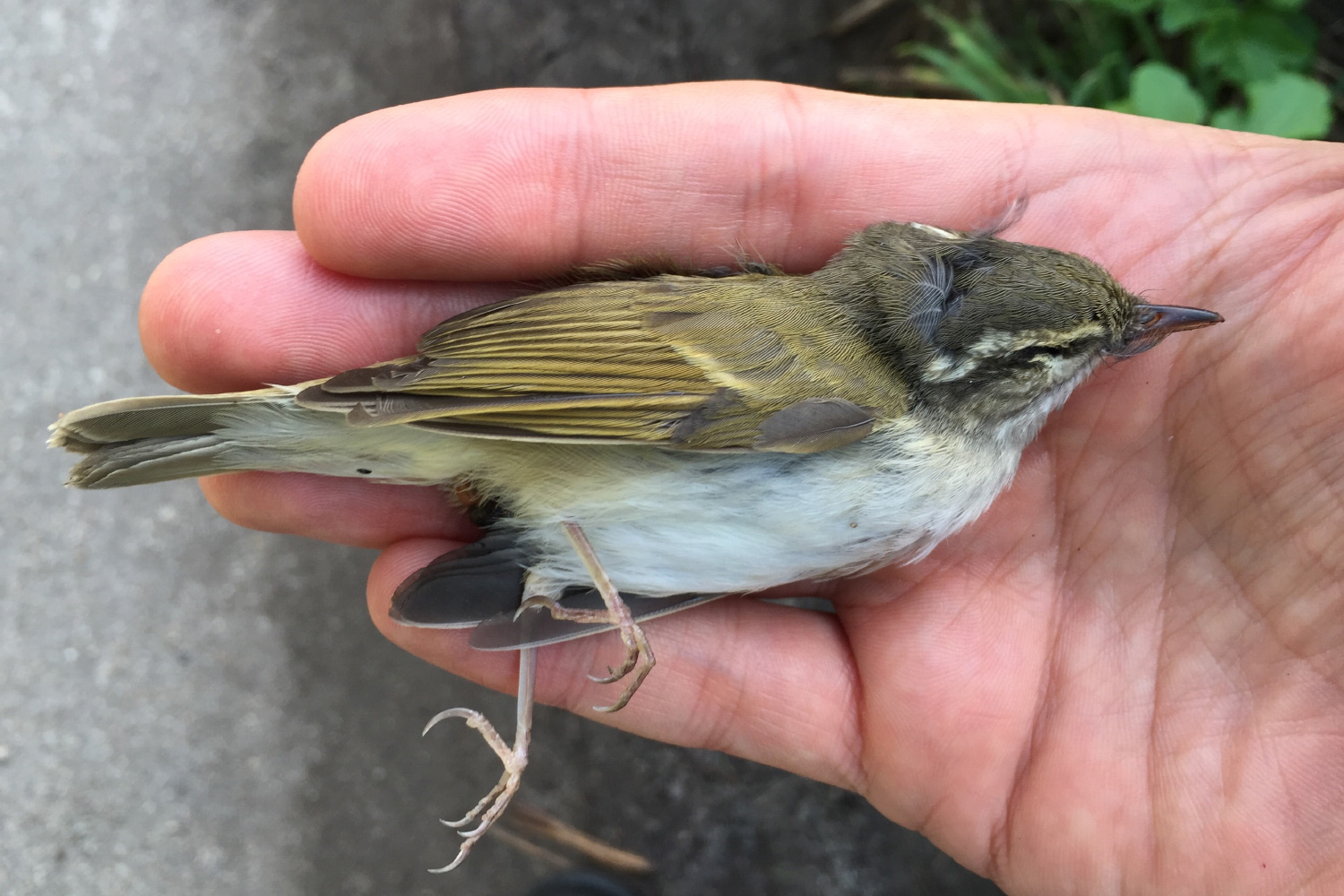
Pale-legged Leaf Warbler (St Agnes, Scilly, 21 October 2016). The plain tertials confirm that this is one of the larger Phylloscopus warblers. The narrow double wing-bar (very faint on the median coverts) could suggest Arctic or Eastern Crowned, but there is no central crown stripe. Is it then an Arctic? Closer examination reveals a contrasting greyish crown and strikingly pale, almost 'ghostly', pink legs. These are both features of the Sakhalin Leaf/Pale-legged Leaf Warbler species pair (Laurence Pitcher).

Yellow-browed Warbler (St Mary's, Scilly, 2 October 2011). The small Phylloscopus warblers are completely at home in their typical habitat of tall trees, able to hover acrobatically to pick insects off the undersides of leaves. This Yellow-browed Warbler is performing just such a manoeuvre, though the species is less of an habitual hoverer than Pallas's (Steve Young / birdsonfilm.com).

Hume's Leaf Warbler (Holkham, Norfolk, December 2010). The whitish edges to the tertials confirm that this is one of the small leaf warblers, the plain crown narrowing down the choice to Yellow-browed or Hume's Leaf Warblers. The very drab, greyish hues indicate the latter, a diagnosis confirmed by this bird's rather subdued supercilium, weak median covert wing-bar and dark-looking bill and legs (Ian Butler).
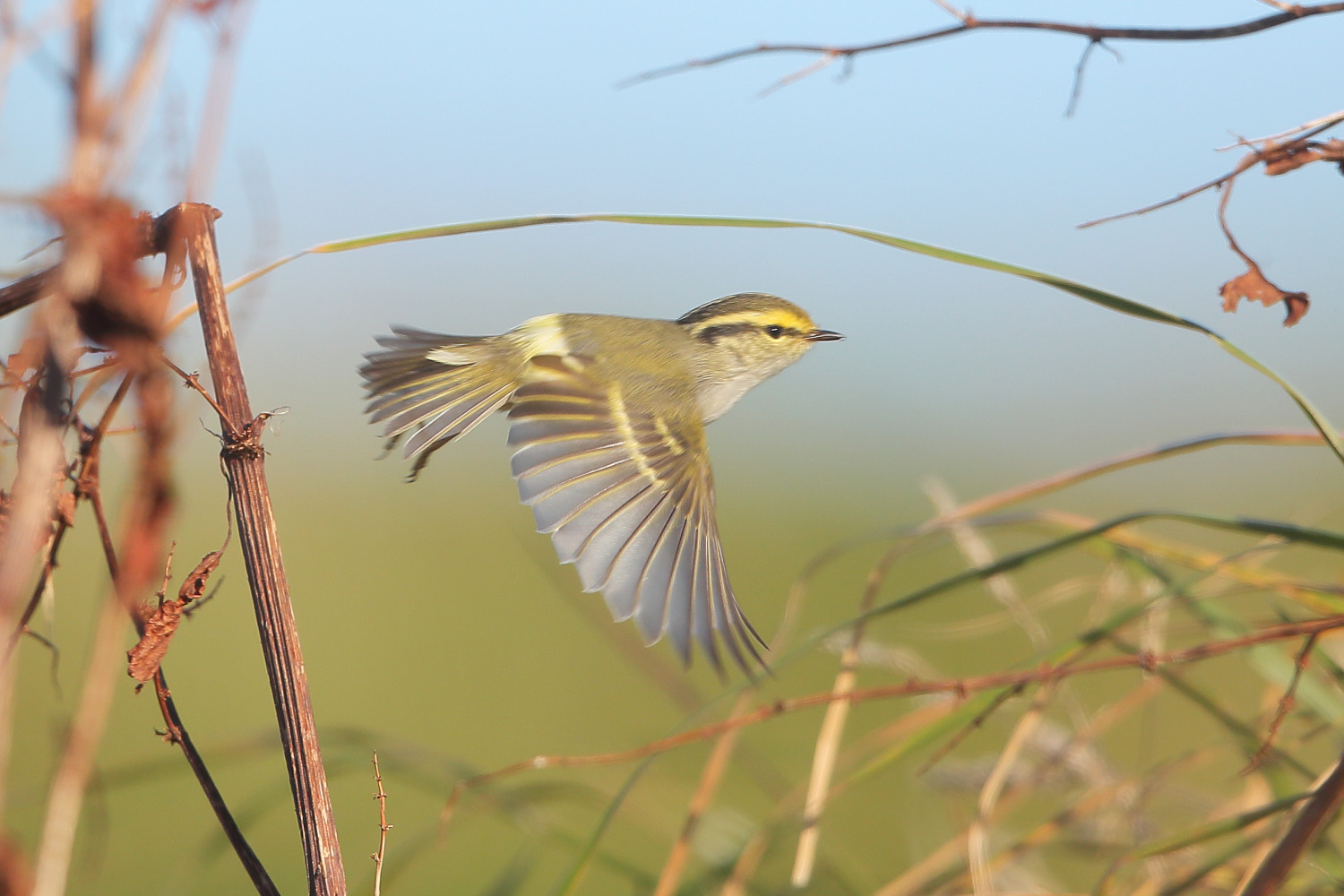
Pallas's Warbler (Fetlar, Shetland, 8 October 2016). The neat 'postage stamp' pale yellow rump immediately identifies this bird as a Pallas's Warbler, but note also the very bright and contrasting face pattern with a very broad golden-yellow supercilium, dark olive crown-sides and a strong dark loral line and eyestripe. The crest-like structure of Pallas's Warbler, with a large-looking head and short tail, is also well captured here (James Lowen / www.jameslowen.com).
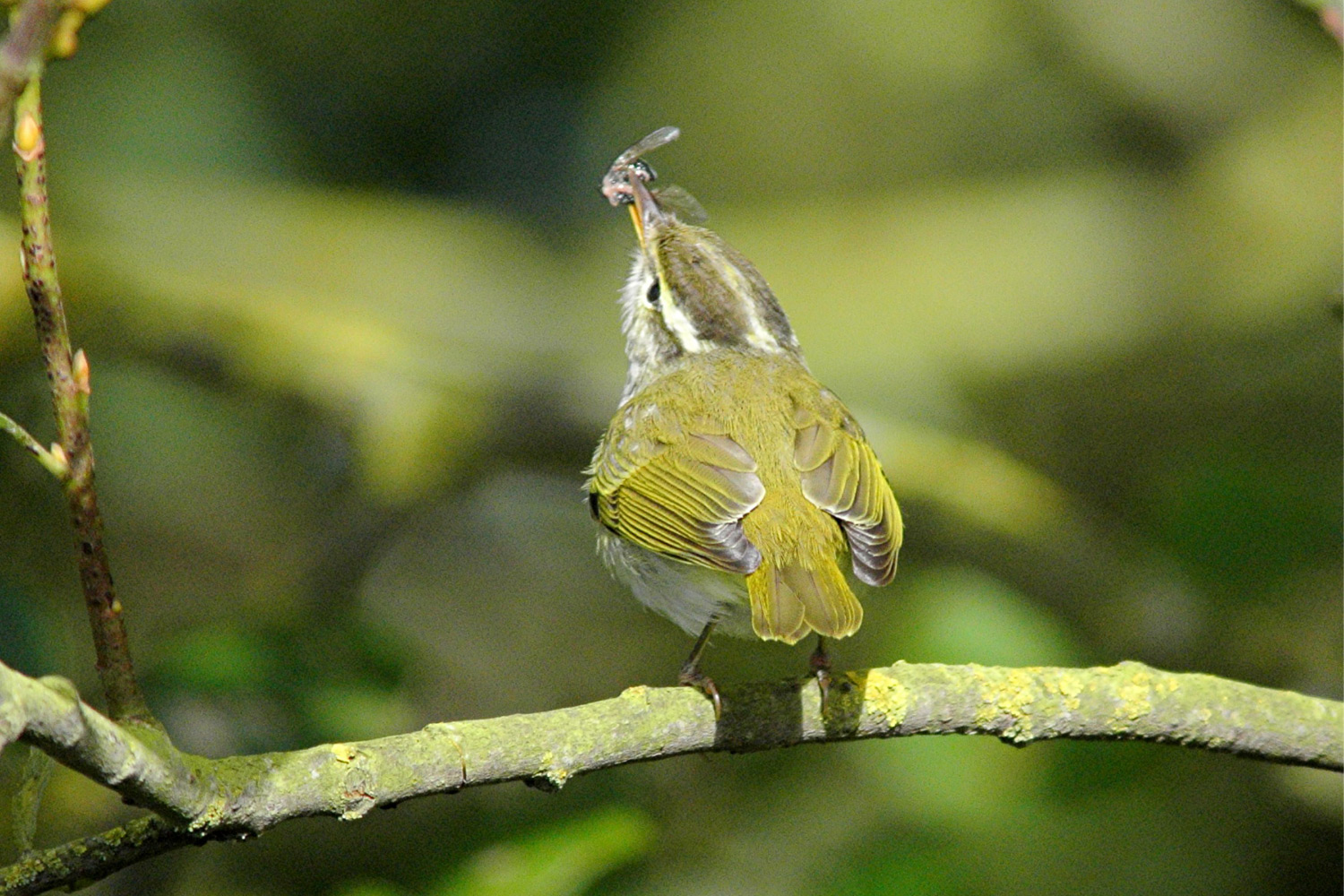
Eastern Crowned Warbler (Bempton Cliffs RSPB, East Yorkshire, 6 October 2016). The pale central crown stripe might for a moment suggest Pallas's Warbler, but the plain tertials show that we are dealing here with a large leaf warbler species. This is sufficient to identify this bird as Eastern Crowned Warbler, but take in the other features, too: barely visible double wing-bars, a rather 'bright' or 'open' face pattern (a function of somewhat plain ear coverts) and beautiful moss-green upperparts, with no contrasting yellow rump (Steve Nuttall).
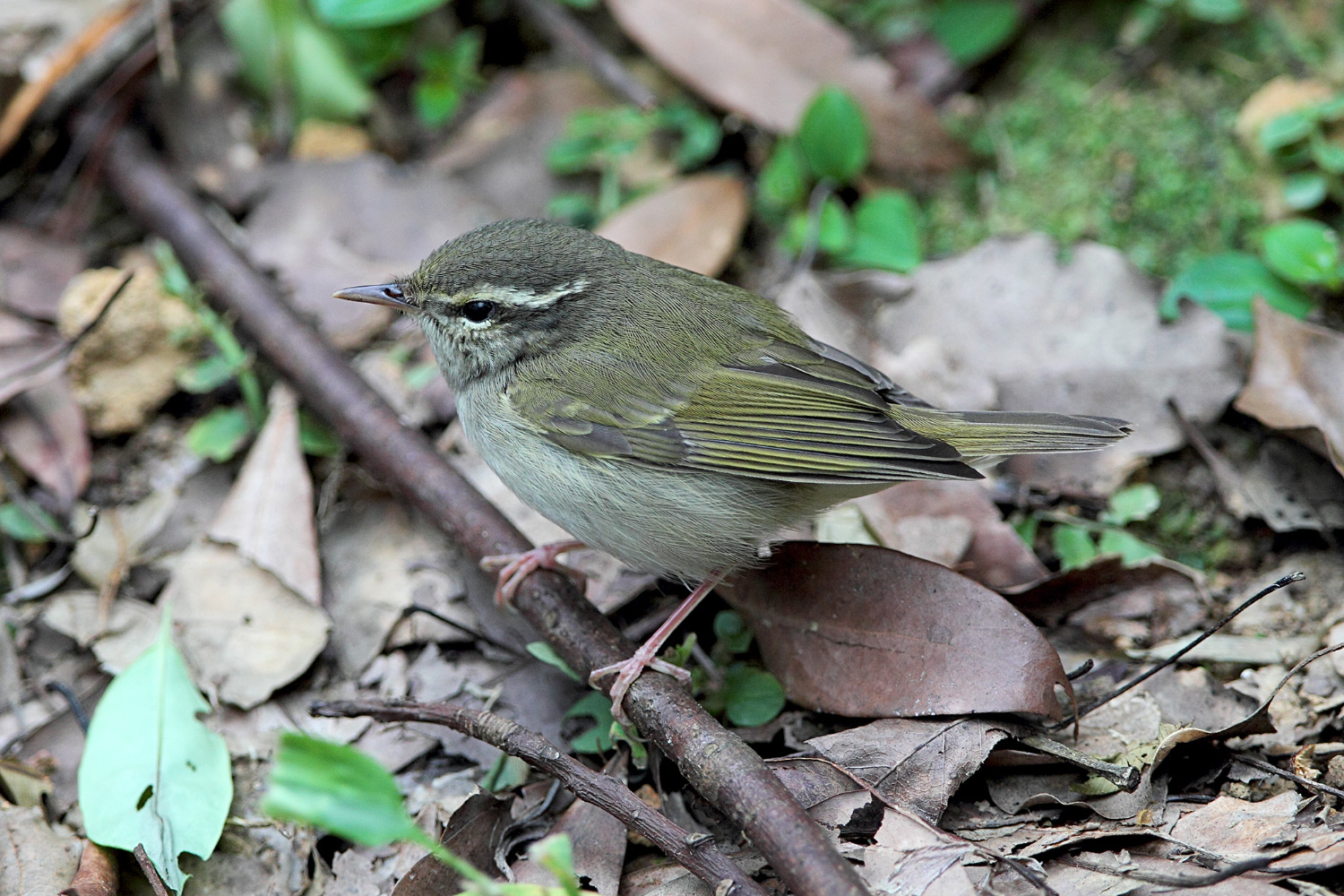
Pale-legged Leaf Warbler (Tai Po Kau, Hong Kong, 21 September 2016). With plain tertials and a plain crown, this is an Arctic Warbler-like, large Phylloscopus. Could it be that species? The dark-looking bill, contrasting greyish crown and strikingly pale pink legs are all clues that this is no Arctic Warbler; rather it is a Sakhalin Leaf/Pale-legged Leaf Warbler. In life, the distinctive neurotic demeanour of these two very similar species, together with an equally distinctive high-pitched call, would be even more striking, but separation on plumage alone remains problematic (Michelle Wong).
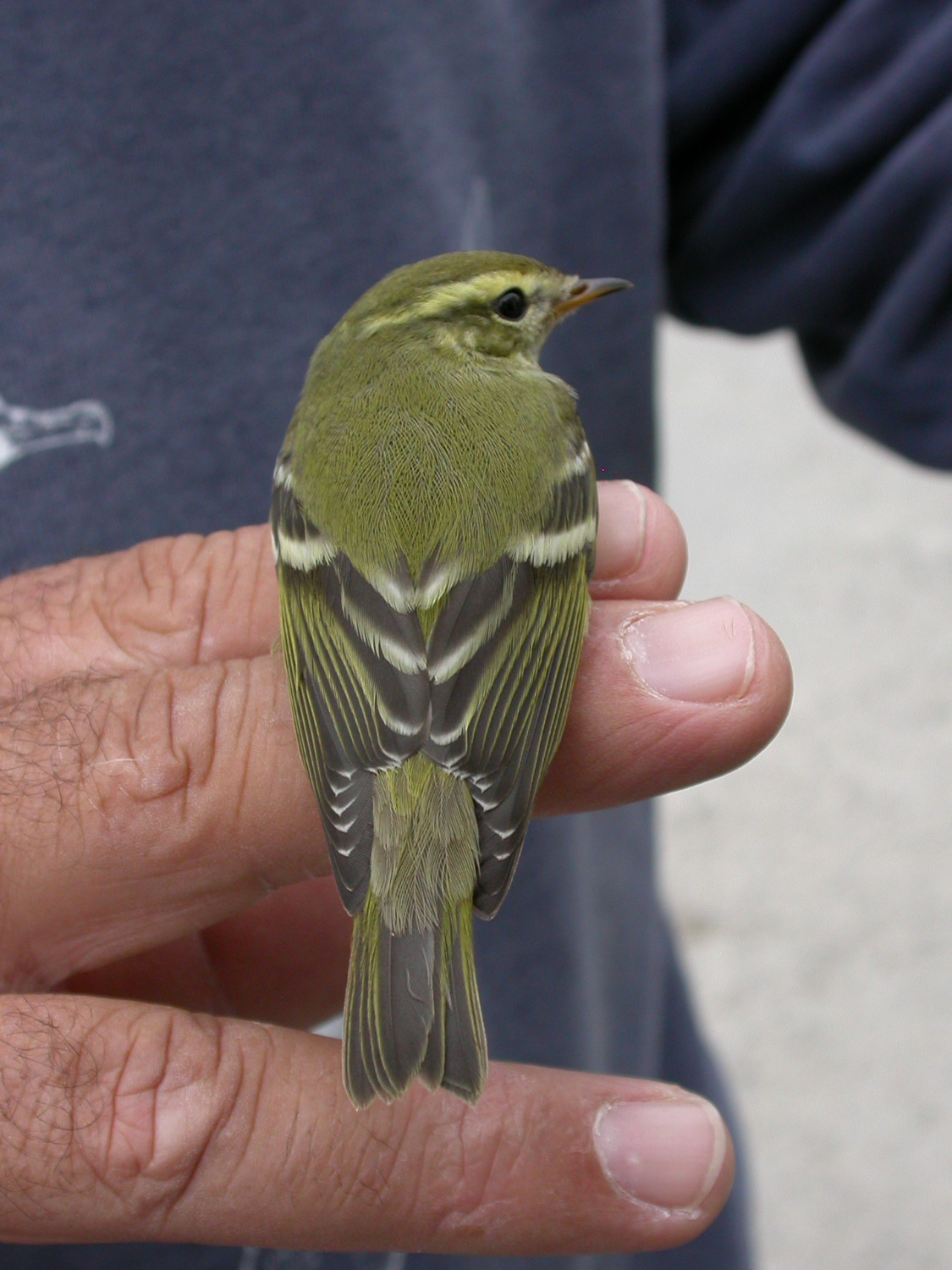
Yellow-browed Warbler (Cape Clear, Co Cork, 6 October 2005). With its prominent white tertial fringes, this can only be one of the small leaf warblers. The combination of bright green upperparts, plain crown, strong creamy supercilium, extensive orange in the bill and striking double wing-bars enables a straightforward identification as Yellow-browed Warbler. This individual is exceptionally fresh, still having neat white tips to the secondaries and inner primaries as well (Paul Kelly).
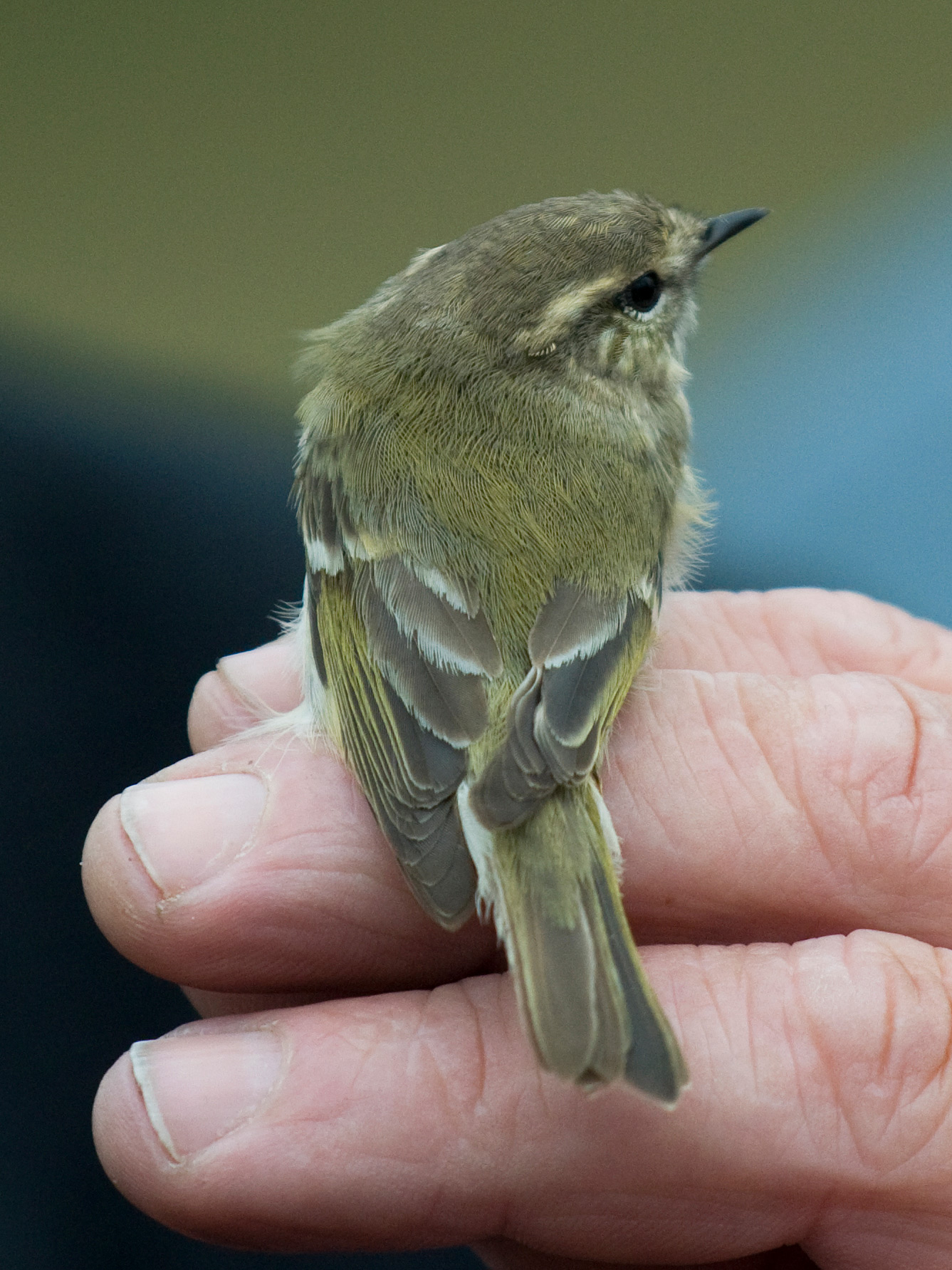
Hume's Leaf Warbler (Kilnsea, East Yorkshire, 13 May 2009). By contrast, this Hume's Leaf Warbler appears much drabber and less bright green, with a more subdued face pattern. Note that it is more worn, with narrower wing-bars and tertial fringes, and the pale tips to the flight feathers have already worn off. Also visible here is the largely dark bill (Paul Wilson).
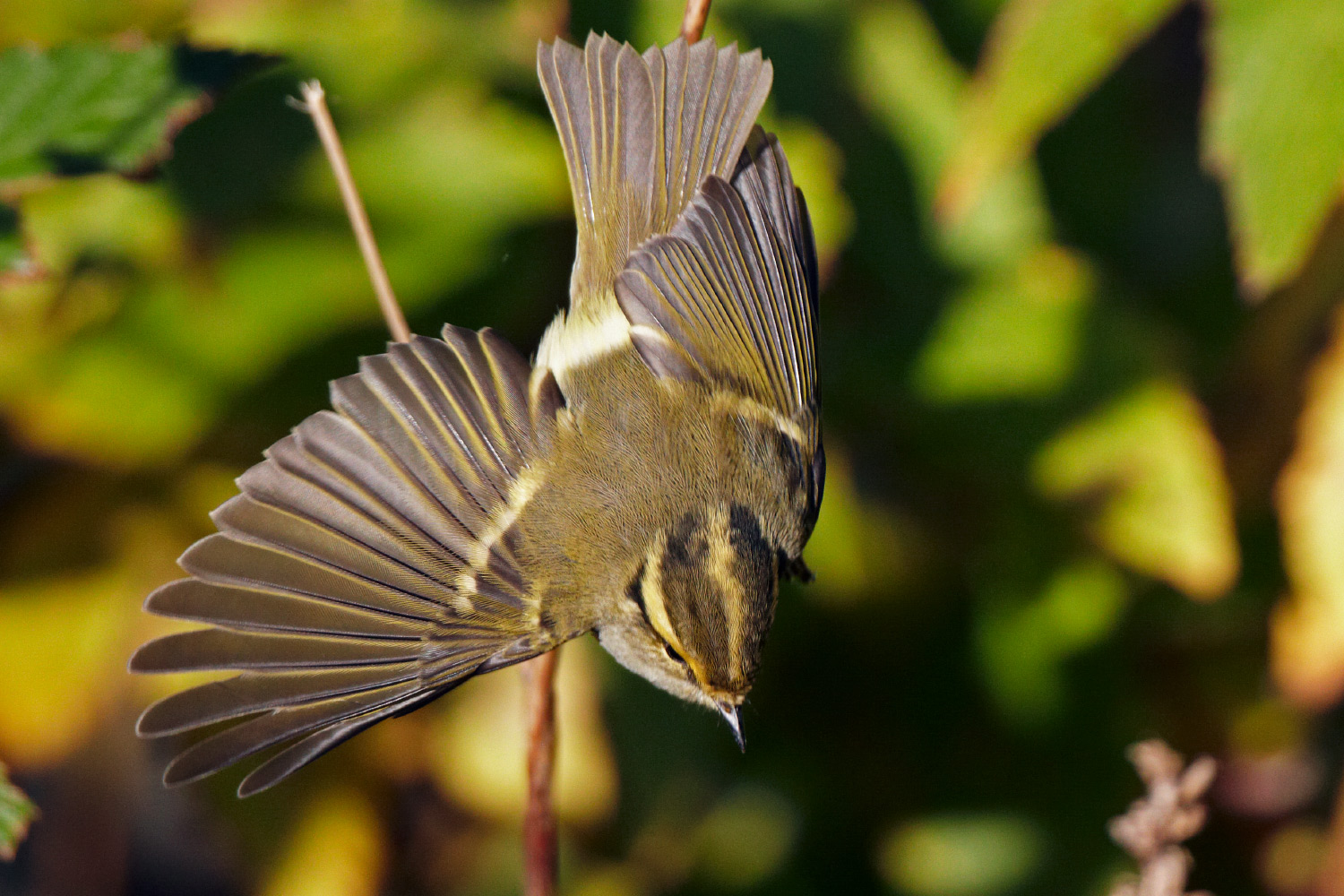
Pallas's Warbler (Finland, 13 October 2010). This Pallas's Warbler is doing its best to show its full suite of features in one photograph. Note the contrastingly dark olive cown with prominent central stripe, strong face pattern, 'wrap-around' pale yellow rump patch, bold double wing-bars and whitish tertial edges (Markus Varesvuo / www.birdphoto.fi).
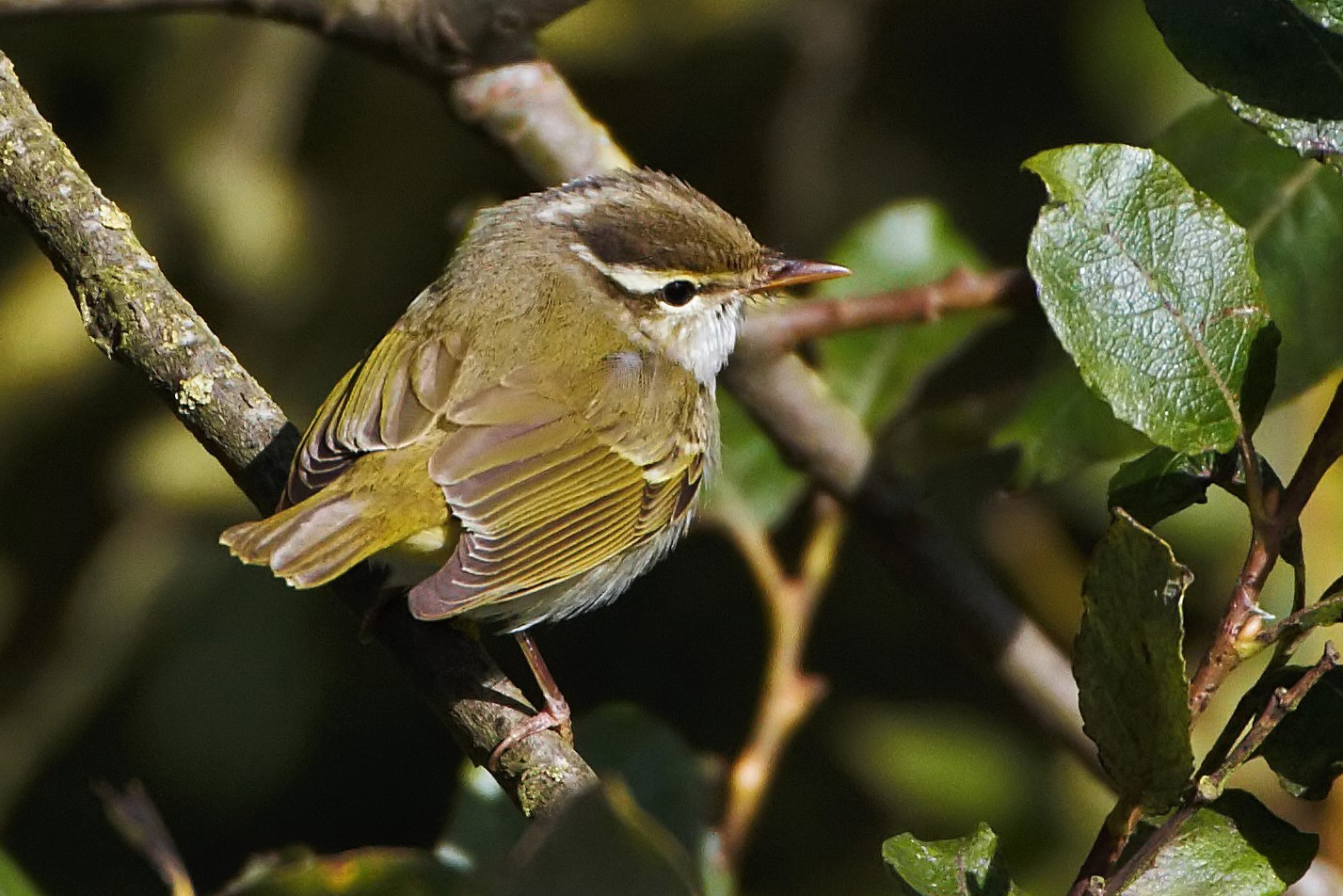 Eastern Crowned Warbler (Bempton Cliffs RSPB, East Yorkshire, 6 October 2016). This charming portrait shows the full set of Eastern Crowned Warbler features: bright moss-green upperparts, plain tertials, fine double wing-bars, greyish-olive crown with a pale central stripe, strong face pattern but unmarked ear coverts and a rather long, prominent bill (James Hanlon).
Eastern Crowned Warbler (Bempton Cliffs RSPB, East Yorkshire, 6 October 2016). This charming portrait shows the full set of Eastern Crowned Warbler features: bright moss-green upperparts, plain tertials, fine double wing-bars, greyish-olive crown with a pale central stripe, strong face pattern but unmarked ear coverts and a rather long, prominent bill (James Hanlon).
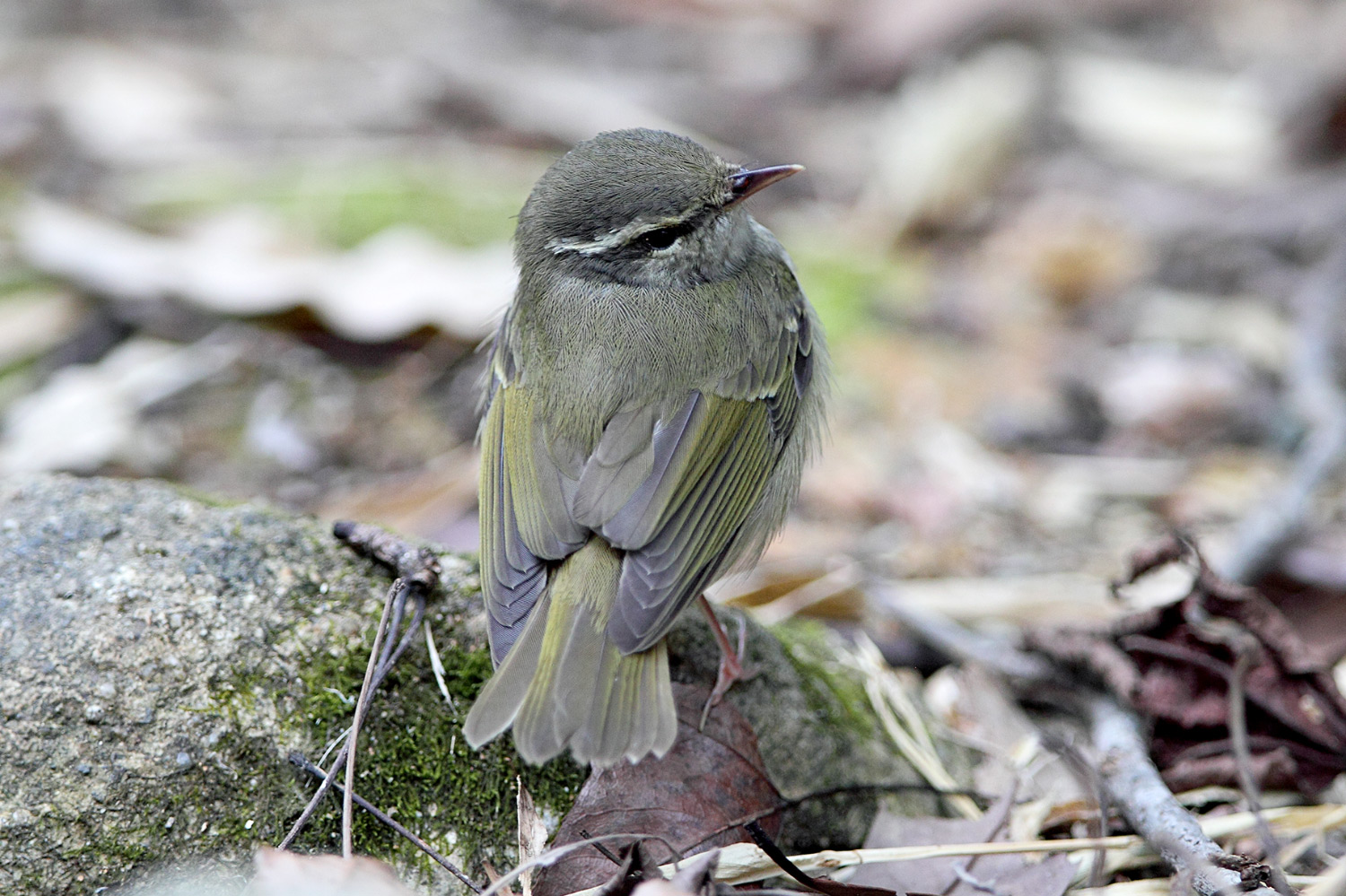
Pale-legged Leaf Warbler (Tai Po Kau, Hong Kong, 21 September 2016). Though reminiscent of an Arctic Warbler on this view, this Sakhalin Leaf/Pale-legged Leaf Warbler reveals its identity by its slightly contrasting grey crown, dark-looking bill and 'ghostly' pale pink legs. Ground-feeding is a typical habit of this species pair. In life, look out for the nervous demeanour and listen for the the distinctive high-pitched call (Michelle Wong).
- This article was originally published in the October 2017 issue of Birdwatch magazine.







